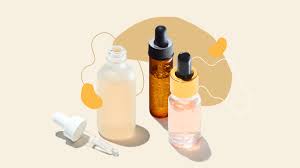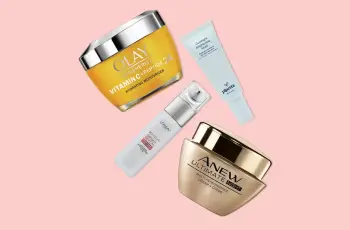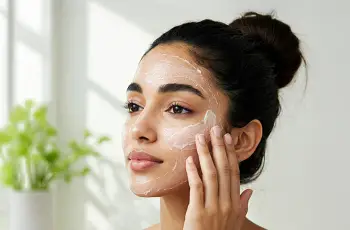
Can You Use Vitamin E with Hyaluronic Acid? Unlocking Their Skincare Synergy
Hyaluronic acid and vitamin E are two of the most celebrated skincare ingredients. They each deliver impressive benefits alone but shine even more when combined.
But can you use vitamin E with hyaluronic acid? The answer is a confident yes! Let’s explore how to make the most of these skin-loving powerhouses.
What Is Hyaluronic Acid and Why Is It So Popular?
Hyaluronic acid is a natural molecule known for its incredible ability to retain moisture. One single molecule can hold up to 1,000 times its own weight in water, making it a hydration superstar for your skin.
This ingredient acts as a humectant — it draws water from deeper skin layers and locks it in at the surface. This keeps your skin plump, supple, and glowing.
The Key Benefits of Hyaluronic Acid on Your Skin
Boosts Hydration: Locks moisture in for hours, preventing dryness.
Smooths Fine Lines: Hydrated skin appears firmer and smoother.
Strengthens Skin Barrier: Helps your skin defend against pollution and free radicals.
Tightens Pores: Makes pores less noticeable by improving skin elasticity.
Enhances Product Absorption: Preps skin for other ingredients to penetrate deeper.
Improves Makeup Application: Hydrated skin provides a flawless canvas.
What Is Vitamin E and Why Is It Essential for Skin?
Vitamin E is a powerful antioxidant that protects skin from damage caused by free radicals and environmental stressors like UV rays and pollution.
It nourishes and moisturizes the skin, helping to repair damage and keep your complexion healthy and radiant.
Skin Benefits of Vitamin E
Antioxidant Protection: Fights free radicals that cause premature aging.
Reduces UV Damage: Helps fade dark spots, hyperpigmentation, and uneven tone.
Highly Moisturizing: Perfect for dry or rough patches on face and body.
Speeds Healing: Can reduce scars and promote skin repair.
Fast Absorption: Penetrates quickly to hydrate and support the skin barrier.
Supports Overall Skin Health: Keeps skin plump, balanced, and glowing.
Can You Use Vitamin E With Hyaluronic Acid?
Yes! These two ingredients are a perfect match. Hyaluronic acid hydrates and plumps your skin, while vitamin E nourishes and locks in moisture.
Together, they help maintain your skin’s healthiest state without irritation.
How Should You Layer Vitamin E and Hyaluronic Acid?
When layering skincare, the general rule is to apply from thinnest to thickest texture. Start with cleansers and toners, then serums, oils, and finally moisturizers.
If your hyaluronic acid is in a lightweight serum, apply it before a thicker vitamin E cream or oil. This ensures both products absorb properly without one blocking the other.
Why Is Layering Important in Skincare?
Proper layering ensures each ingredient can penetrate the skin effectively. If you apply thick creams first, lighter serums might not absorb well, reducing their benefits.
Layering from thin to thick also helps prevent pilling or product buildup, which can cause irritation or reduce makeup longevity.
What Works Best With Hyaluronic Acid?
Hyaluronic acid is incredibly versatile and pairs well with many other skincare powerhouses, such as:
Vitamin C: For brightening and antioxidant protection.
Niacinamide: To improve texture and reduce redness.
Retinol: To boost collagen and smooth fine lines.
Lactic Acid: For gentle exfoliation and hydration.
Always patch test new combinations to ensure your skin reacts well.
Different Molecular Sizes of Hyaluronic Acid: Why It Matters
Not all hyaluronic acid is created equal. Some formulas use multiple molecular weights that penetrate different skin layers.
Larger molecules hydrate the surface, while smaller ones reach deeper for long-lasting plumpness.
This layered hydration system helps keep skin balanced and prevents the “thirsty” feeling that can occur if hyaluronic acid pulls moisture from the skin’s surface instead of from within.
Pro Tip: Apply Hyaluronic Acid to Damp Skin
To maximize hyaluronic acid’s effects, apply it when your skin is slightly damp. This allows it to lock in existing moisture rather than drawing it from dry skin, which can sometimes cause irritation.
Follow up quickly with your moisturizer to seal everything in.
Can You Mix Hyaluronic Acid with Vitamin C and Vitamin E?
Absolutely! Using hyaluronic acid alongside vitamins C and E creates a powerful antioxidant and hydration combo. These three together combat aging, brighten your complexion, and protect your skin barrier.
How to Use Hyaluronic Acid, Vitamin C, and Vitamin E in Your Routine
Morning: Start with a vitamin C serum to shield against free radicals.
Follow with hyaluronic acid serum to lock in hydration.
Finish with a moisturizer or sunscreen containing vitamin E for nourishment and protection.
Evening: Apply hyaluronic acid serum to hydrate.
Follow with a vitamin E-rich moisturizer or oil to repair skin overnight.
This layering approach maximizes benefits without compromising absorption or effectiveness.
Should I Use Hyaluronic Acid Before or After Retinol?
Use hyaluronic acid after retinol to soothe and hydrate. Retinol can dry out your skin initially, so hyaluronic acid helps combat this side effect.
Wait about 30 minutes after applying retinol before adding your hyaluronic acid serum. Follow with a moisturizer containing hyaluronic acid for extra protection.
This routine locks moisture in and shields your skin from environmental stressors.
Why Wait Between Applying Retinol and Hyaluronic Acid?
Retinol needs time to absorb and work without interference. Applying other products too soon can dilute retinol or reduce its effectiveness.
A 20-30 minute gap lets retinol fully penetrate and start stimulating collagen production.
Other Tips for Using Hyaluronic Acid and Vitamin E
Use gentle cleansers to avoid stripping skin moisture.
Avoid harsh exfoliants when using retinol and hyaluronic acid together.
Always apply sunscreen during the day — antioxidants aren’t enough alone to protect against UV damage.
Be patient! Consistency over weeks and months reveals the best results.
The Bottom Line: Vitamin E and Hyaluronic Acid Are a Dream Team
These ingredients complement each other beautifully. Hyaluronic acid hydrates and plumps, while vitamin E nourishes and protects.
Together, they help your skin stay healthy, hydrated, and radiant with minimal risk of irritation. Use them thoughtfully, and your skin will thank you.
Stay Connected for More Skincare Tips
For the latest skincare advice, product launches, and exclusive discounts, don’t forget to follow us on Instagram! Feel free to send a message with any questions — we love helping you glow.


